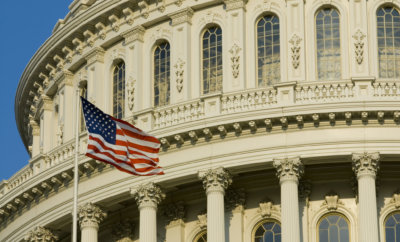Immigration
Share of U.S. Population Born Abroad Hits a 108-Year Peak

Photo Credit: Bigstock
The Census Bureau’s figures for 2017 confirm a major shift in who is coming to the United States.
The foreign-born population in the United States has reached its highest share since 1910, according to government data released Thursday, and the new arrivals are more likely to come from Asia and to have college degrees than those who arrived in past decades.
The Census Bureau’s figures for 2017 confirm a major shift in who is coming to the United States. For years newcomers tended to be from Latin America, but a Brookings Institution analysis of that data shows that 41 percent of the people who said they arrived since 2010 came from Asia. Just 39 percent were from Latin America. About 45 percent were college educated, the analysis found, compared with about 30 percent of those who came between 2000 and 2009.
“This is quite different from what we had thought,” said William H. Frey, the senior demographer at the Brookings Institution who conducted the analysis. “We think of immigrants as being low-skilled workers from Latin America, but for recent arrivals that’s much less the case. People from Asia have overtaken people from Latin America.”
The new data was released as the nation’s changing demography has become a flash point in American politics. President Donald Trump, and many Republicans, have sounded alarms about immigration and suggested the government needs to restrict both the number and types of people coming into the country.
The last historic peak in immigration to the United States came at the end of the 19th century, when large numbers of Europeans fled poverty and violence in their home countries. Some of the largest numbers came from Germany, Italy and Poland. That wave peaked around the turn of the century, when the total foreign-born population stood at nearly 15 percent. But after the passage of strict racial quotas in the 1920s, the foreign-born population fell sharply for decades in the middle of the 20th century. By 1970, the population was below 5 percent.
The passage of a more liberal immigration law in 1965, which ended ethnic quotas and prioritized family reunification, ushered in new demographics. And the changes have only accelerated in recent years.
For many years, Mexico was the single largest contributor of immigrants. But since 2010, the number of immigrants arriving from Mexico has declined, while those from China and India have surged. Since 2010, the increase in the number of people from Asia — 2.6 million — was more than double the 1.2 million who came from Latin America, Frey found.
The foreign-born population stood at 13.7 percent in 2017, or 44.5 million people, compared with 13.5 percent in 2016.
Some of the largest gains were in states with the smallest immigrant populations, suggesting that immigrants were spreading out in the country. New York and California, states with large immigrant populations, both had increases of less than 6 percent since 2010. But foreign-born populations rose by 20 percent in Tennessee, 13 percent in Ohio, 12 percent in South Carolina and 20 percent in Kentucky over the same period.
Emmanuel D’Souza, a nurse practitioner in Dayton, Ohio, who emigrated from India in 2004, said he has noticed a growing and thriving Indian population in his area.
“Now when you go to the grocery store at 5 or 6 in the evening, you see a lot of Indian people, buying vegetables after work,” said D’Souza.
He said he saw fewer Indian people when he bought his house in 2009 than he does today. Now he counted at least four temples and two mosques, and said there are two Indian specialty grocery stores. D’Souza, 41, who is Catholic, also sees Indians in church on Sundays.
The data also suggests a political pattern among states with large percentages of foreign-born residents. Of the 15 states with the highest concentration of immigrants, all but three — Florida, Texas and Arizona — voted for Hillary Clinton in the 2016 presidential race. Many of the states with low and moderate concentrations of foreign-born people voted for Trump, Frey found.
In those low-concentration states, foreign-born populations tended to be more educated than the native-born. In Ohio, for example, 43 percent of the foreign-born population is college educated, compared with just 27 percent of U.S.-born Ohioans.
The same can be true in states with large immigrant populations. About 15 percent of the population of Maryland last year was foreign-born. Of those people, 42 percent had college degrees, compared with 39 percent of U.S.-born Marylanders.
Chao Wu, a data scientist in Columbia, Maryland, who came from China in 2003, said he had long known about Asian graduate students in the United States, because he had been one. But it wasn’t until he started running for a seat on his county’s board of education that he noticed the richness and variation in the population.
“I increased my outreach and I realized there was a big Asian-American business community, with restaurants and grocery stores,” he said. He said he recently helped organize a ceremony in his town with a sister city in China. A portion of Route 40 was renamed Korean Way.
North Dakota had the single largest increase in foreign-born residents since 2010, Frey said, with the number going up by 87 percent. Dr. Fadel E. Nammour, a gastroenterologist in Fargo who moved to the United States from Lebanon in 1996, said he has noticed more immigrant-owned restaurants since he moved to North Dakota in 2002.
“There is more diversity now,” Nammour said. “You can tell by food. There are Indian places that opened up. We have an African place now. Little things that are a little bit different.”
© New York Times 2018



